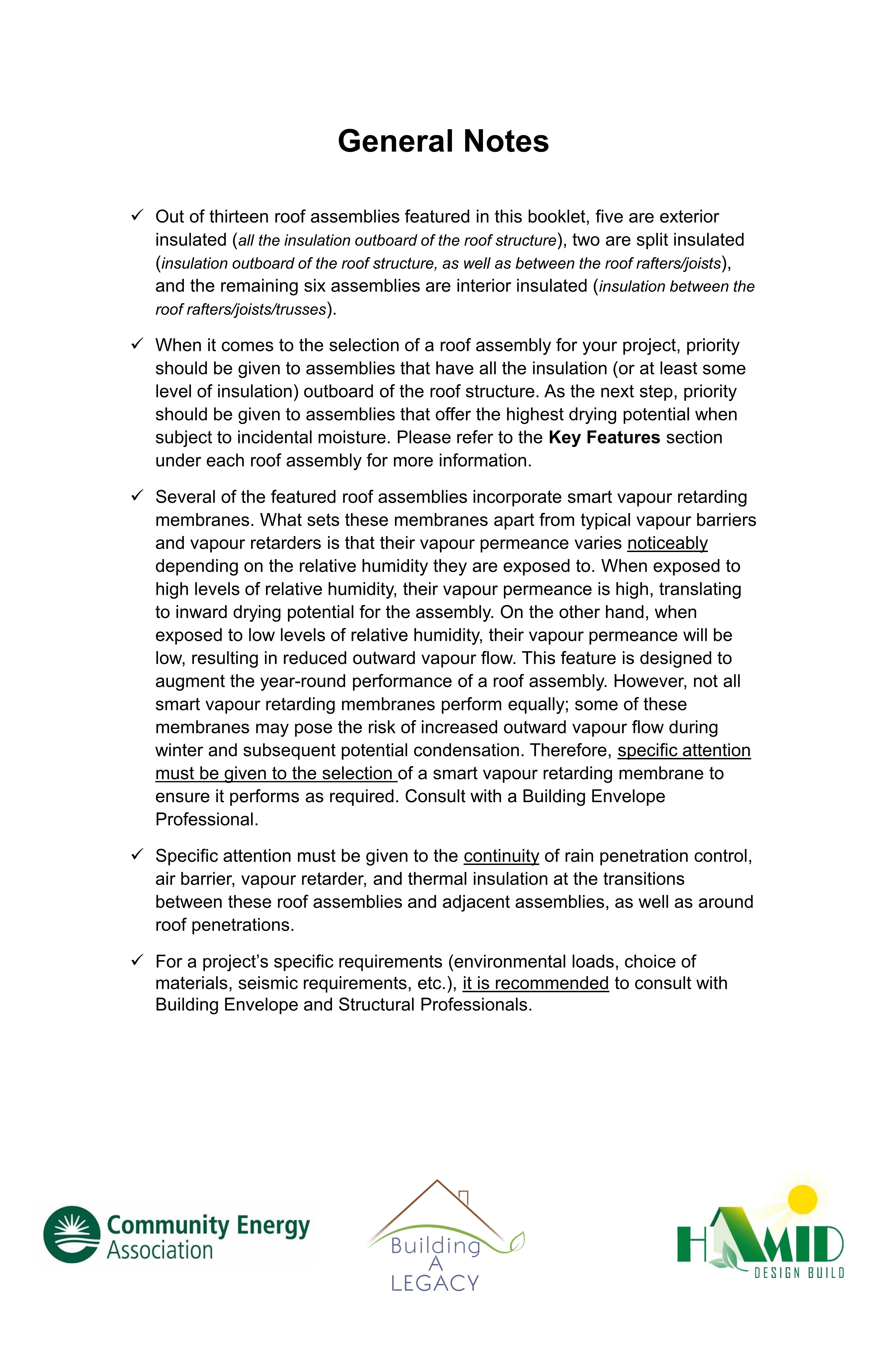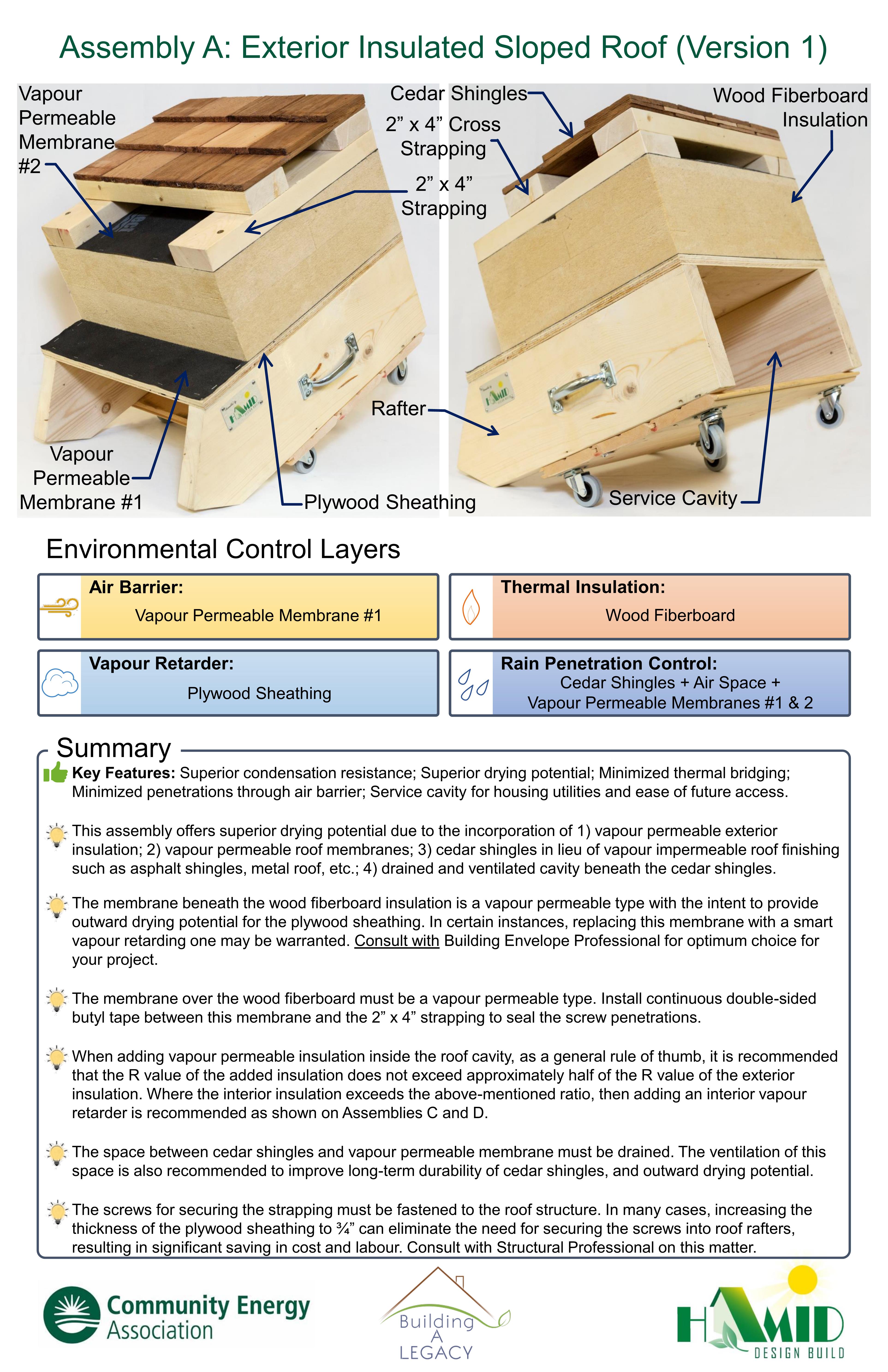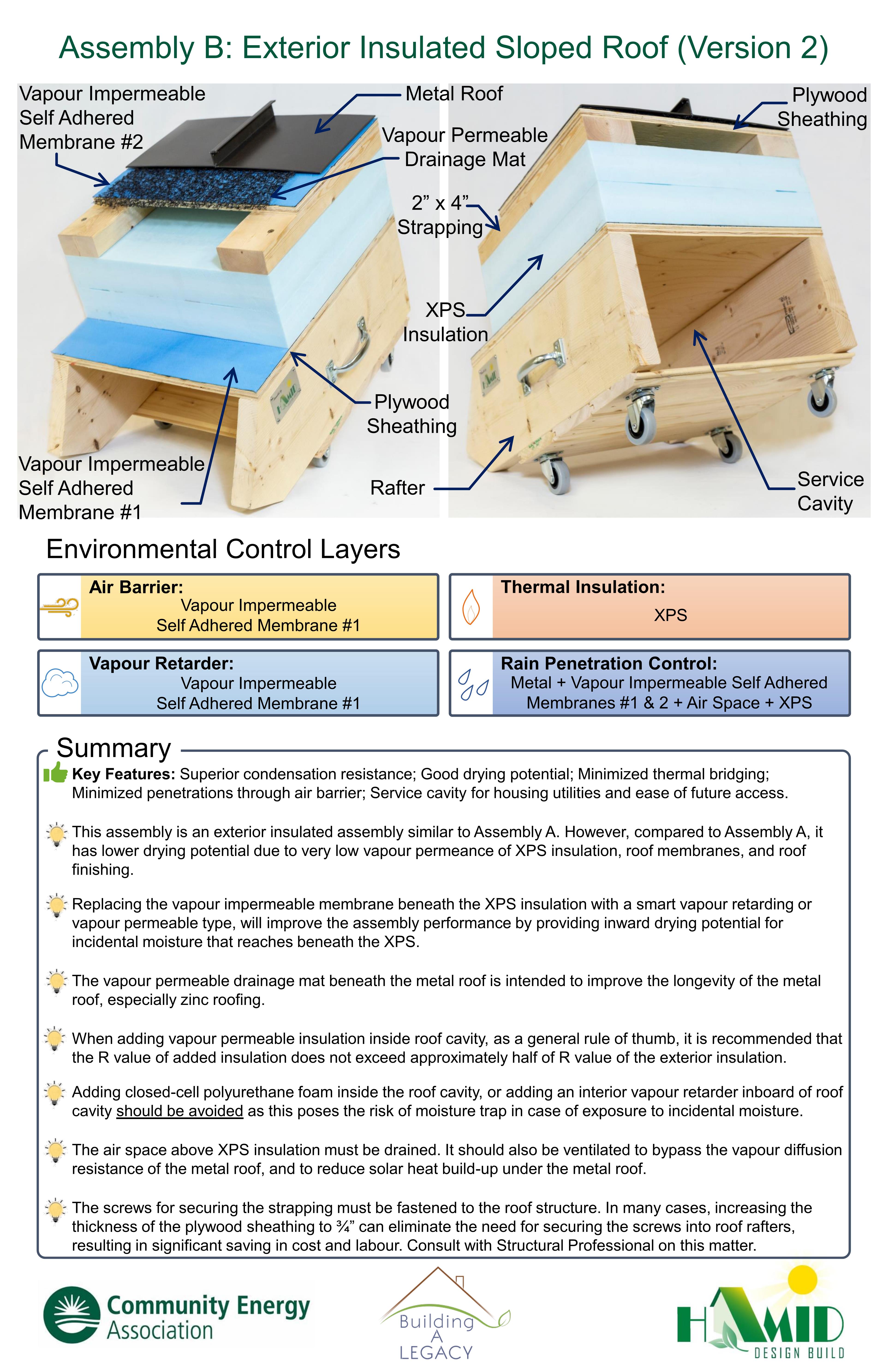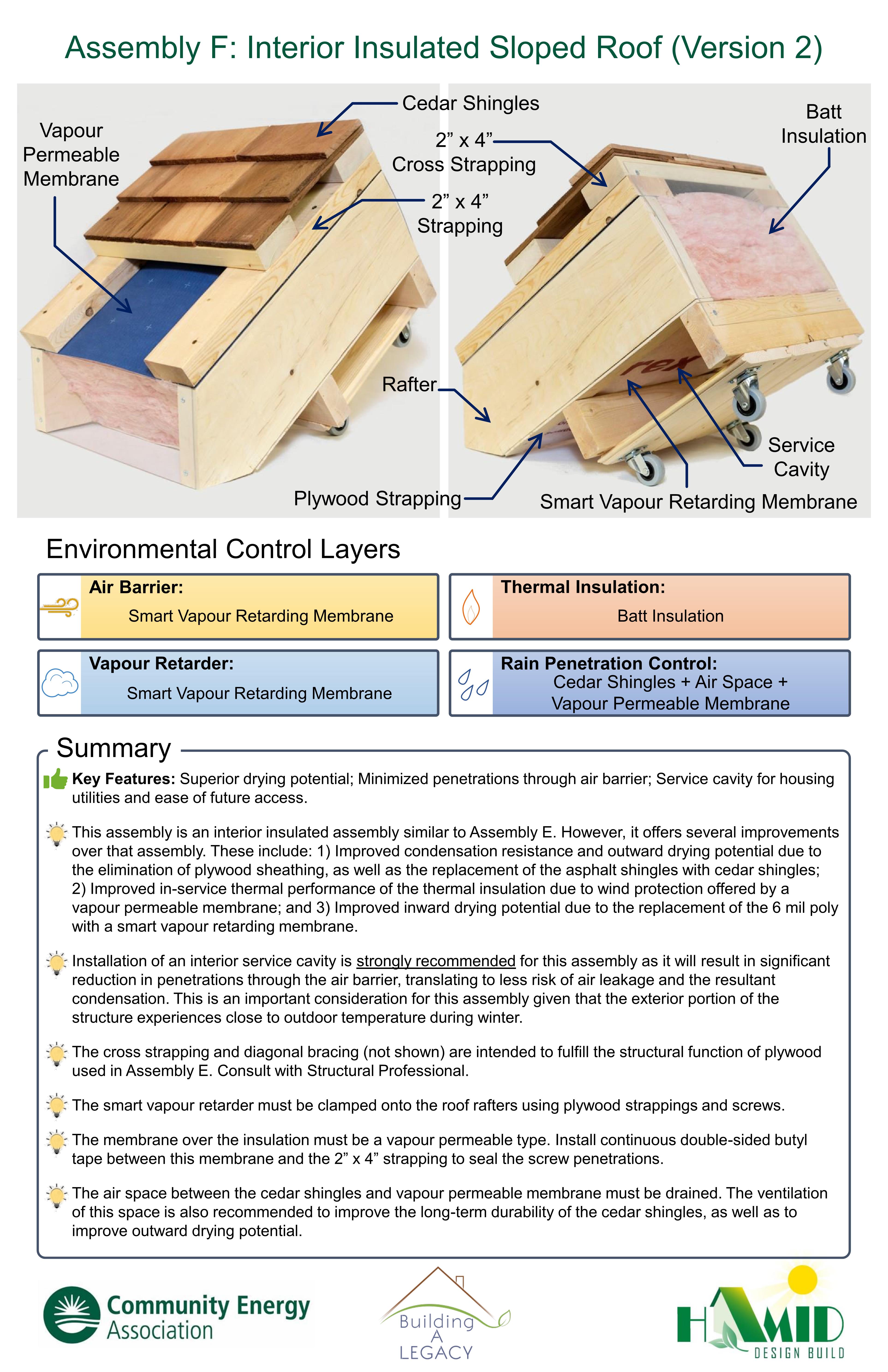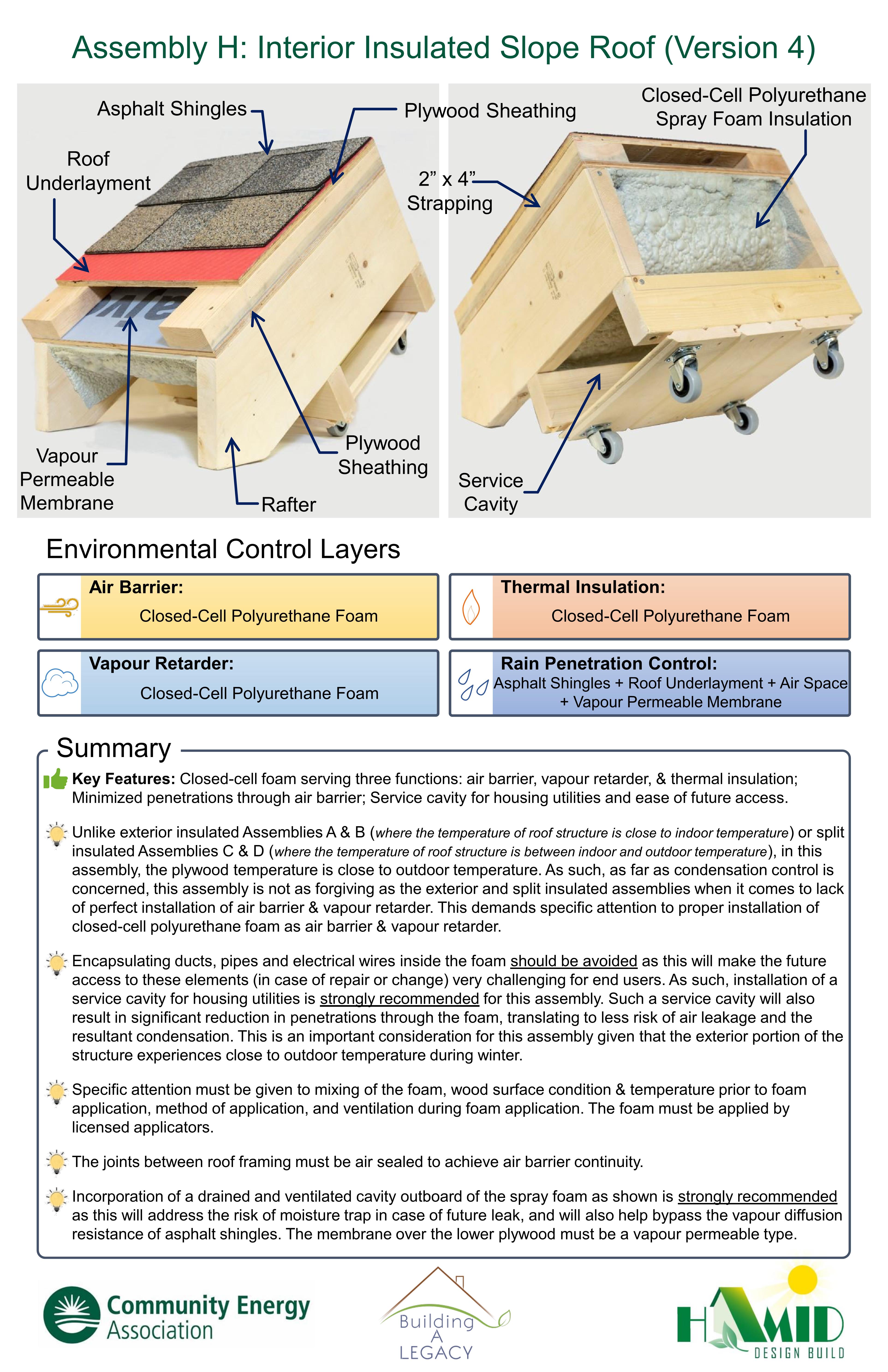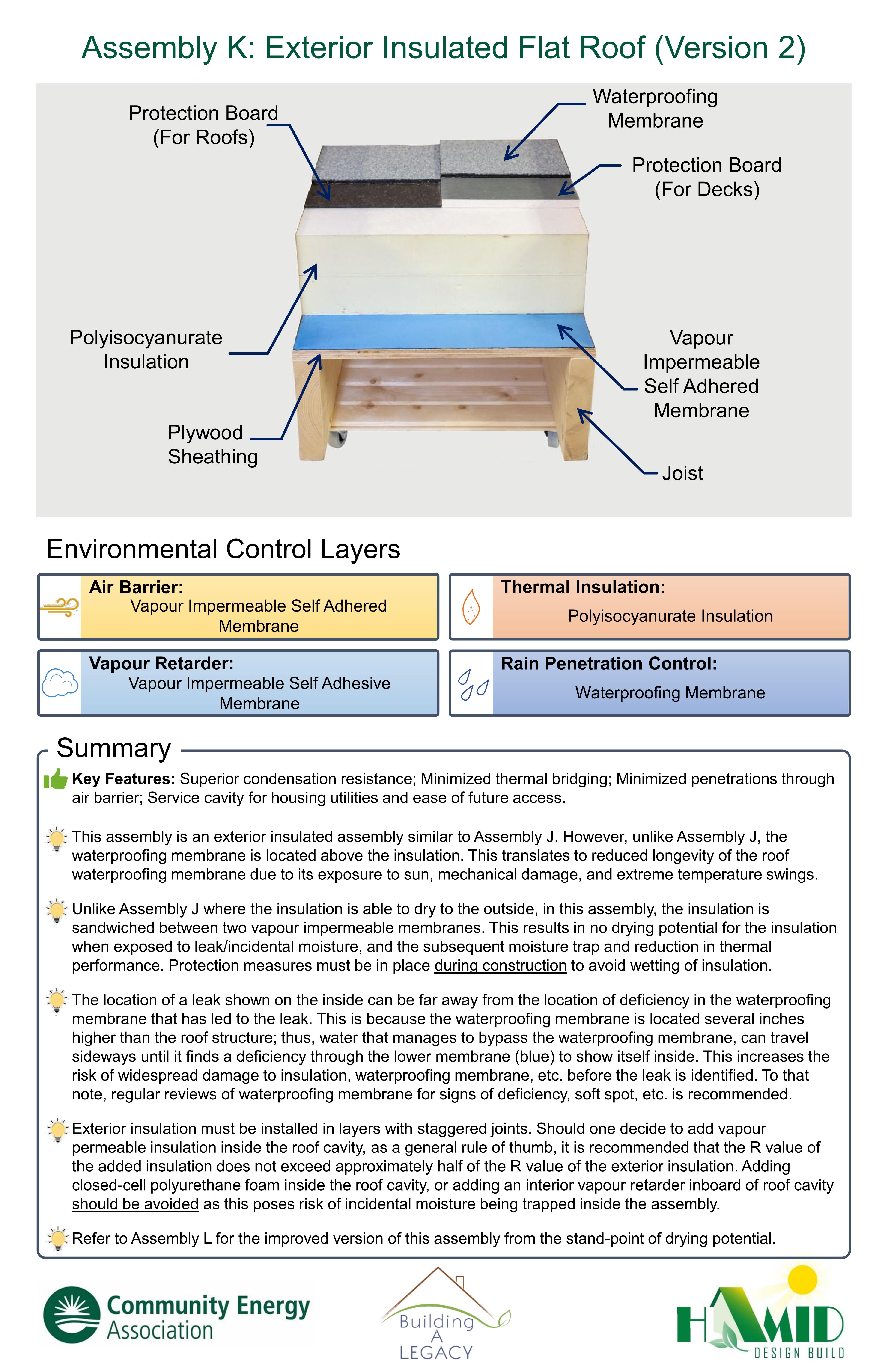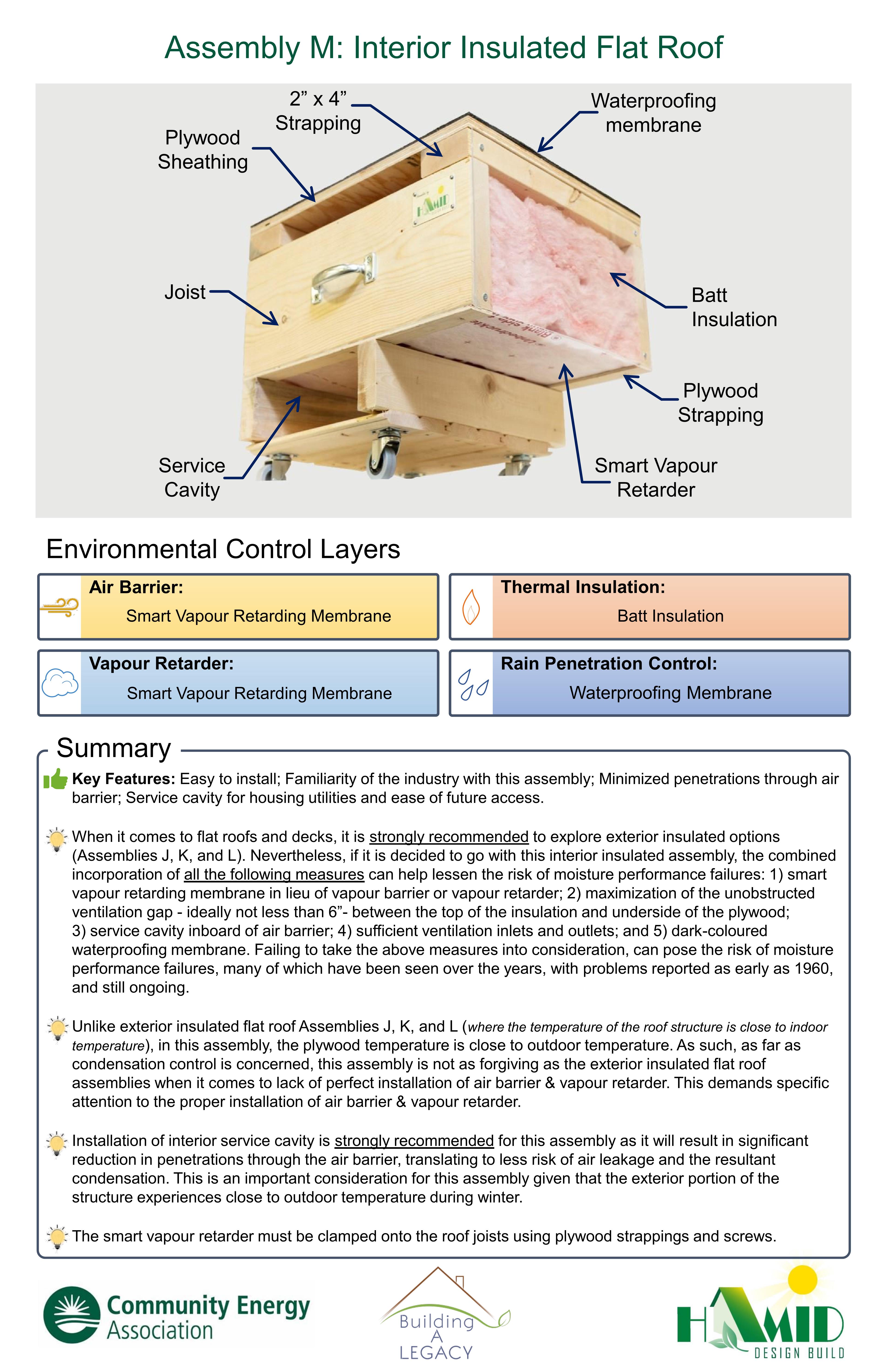When it comes to improving the energy efficiency of a building, the building envelope (walls, windows, roofs, etc.) should be given the first attention, and this is the spirit of newly introduced British Columbia Energy Step Code. This demands specific attention to insulating and air tightness strategies so that energy loss through the building envelope is reduced to the desired level. But there is a catch: Increasing the energy efficiency of the building envelope should be done in such a way that it will not compromise other aspects such as moisture management, durability, etc. So how can we be sure this does not happen? By taking a holistic approach!
This blog highlights nine sloped, and four flat wood-framed roofs, ranging from exterior insulated (all the insulation outboard of the roof structure), split insulated (insulation outboard of the roof structure, as well as between the roof rafters/joists), and interior insulated (insulation between the roof rafters/joists/trusses).
Each assembly is tailored for Canadian climate and is designed with a holistic perspective towards energy efficiency, moisture management, thermal comfort, durability, accessibility, and adaptability to future repair/renovation. Associated key features along with design and construction considerations are provided for each assembly.
This document intends to prepare the industry for the adoption of BC Energy Step Code by reinforcing the importance of taking a holistic approach when it comes to improving the energy efficiency of the building envelope. The information presented here can be used by builders, architects, energy advisors, building inspectors, building owners, etc. in brainstorming various roof options during the design phase, and it can assist in selecting roof options that would be the optimum fit for a project’s specific needs.
The roof mock-ups presented here are designed & built by Hamid Design Build (HDB) for “Building A Legacy”, an initiative of the Regional District of the East Kootenay (RDEK) Community Energy Manager, supported by the RDEK, BC Hydro, Columbia Basin Trust and facilitated by the Community Energy Association (CEA). Initiated by the leadership of Mrs. Megan Loghman and her dedicated team from the Community Energy Association, this project takes an integrative, collaborative, and hands-on approach in developing an intuitive understanding of building energy efficiency and how it relates to long-term impacts. We gratefully acknowledge the financial support of BC Housing as part of the Building Excellence Research and Education Grants program for building these roof assemblies and the accompanying technical booklet.
Thinking holistically is the only reliable way to achieve long-term satisfactory performance of a building as a whole. Let’s aim for it!

